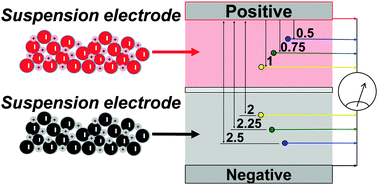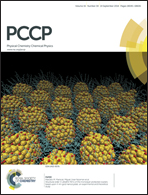In situ distributed diagnostics of flowable electrode systems: resolving spatial and temporal limitations
Abstract
In this study, we have developed an in situ distributed diagnostics tool to investigate spatial and temporal effects in electrochemical systems based on flowable electrodes. Specifically, an experimental approach was developed that enables spatially-resolved voltage measurements to be obtained in situ, in real-time. To extract additional data from these distributed measurements, an experimentally-parameterized equivalent circuit model with a new ‘flow capacitor’ circuit element was developed to predict the distributions of various system parameters during operation. As a case study, this approach was applied to investigate the behavior of the suspension electrodes used in an electrochemical flow capacitor under flowing and static conditions. The volumetric capacitance is reduced from 15.6 F ml−1 to 1.1 F ml−1 under flowing conditions. Results indicate that the majority of the charging in suspension electrodes occurs within ∼750 μm of the current collectors during flow, which gives rise to significant state-of-charge gradients across the cell, as well as underutilization of the available active material. The underlying cause of this observation is attributed to the relatively high electrical resistance of the slurry coupled with a stratified charging regime and insufficient residence time. The observations highlight the need to develop more conductive slurries and to design cells with reduced charge transport lengths.


 Please wait while we load your content...
Please wait while we load your content...